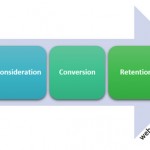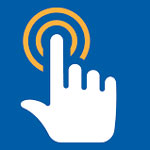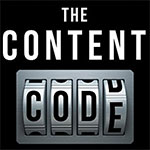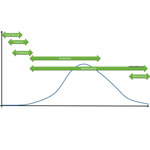Note: This article is part of the collection titled content marketing in less than 300 steps!
Content marketing is based on a simple yet critical assumption:
Purchase decisions do not happen all of a sudden.
Most of them take a long unconscious path in our mind before appearing as an act in the real world in the form of buying a product or subscribing a service.
Therefore, content marketers try to pave the way for customer journey from the first touchpoint to the final act using a collection of created/curated content pieces.
The Customer Journey is a substitute for the classic Purchase funnel model known by marketers for decades. However, the new name, emphasises on the fact that the funnel got longer than before, and it’s not straight-forward anymore! Also, there’s not a single path to the destination, and every channel leads to a different journey and even a different customer experience.
One of the most classic models of customer journey, which is quite close to the traditional funnel model, is the three stage ACC model shown in the below diagram:
In the awareness stage, we just try to build kind of general awareness about the product of service. It’s recommended to create and deliver general content without addressing to our brand or our product (e.g., for marketing a new toothpaste, we are not talking about our brand or product and just speak of the teeth and health issues related to the teeth).
In the consideration stage, all created contents have an implicit message: Consider us as an option in your mind.
Here, the content and the content marketer do not insist on being the best available option.
The core message is just trying to convince the potential customer to include the product/brand in the options list.
Product comparisons and general market reports are among popular content types used in this stage.
In the conversion stage, the content has an explicit call to action.
Here, we claim that we are the best option considering your interests and needs. The call to action can be asking users to register on a mailing list or to buy a product or whatever action which has kind of commitment in it.
The call to action can be asking users to register on a mailing list or to buy a product or whatever action which has kind of commitment in it.
Sure there are many other customer journey models which I will talk about in future articles. Afterwards, considering various cases, we will try to find the most fitted map and will draw customer journey maps accordingly.






